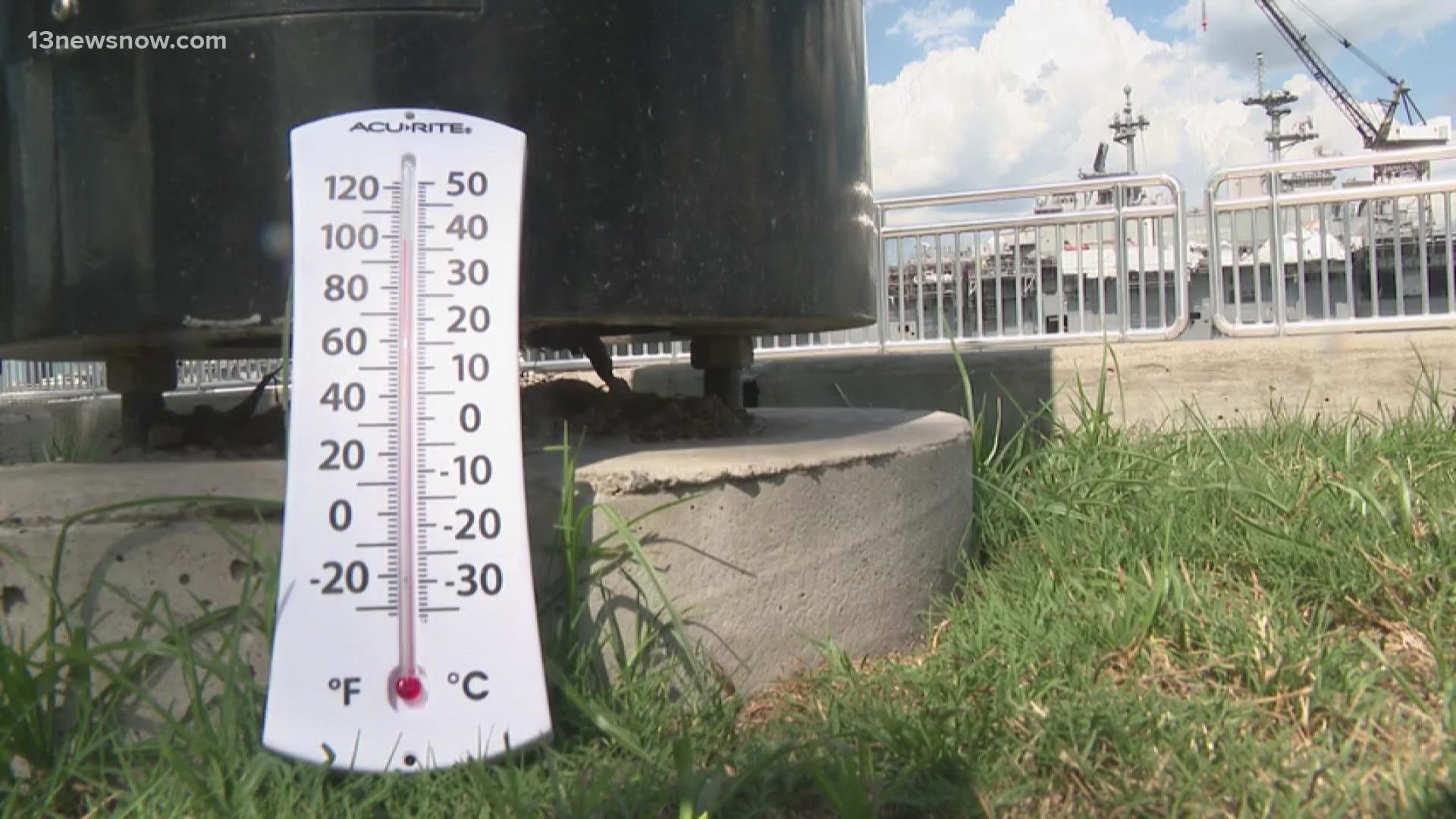NORFOLK, Va. — Hot weather is expected over the summer months, but in recent years, our definition of “hot” and how frequently we experience it has shifted.
“We’re coming up on a stretch of days from [July] 20 through the 28, where most of those records have been set in the last 10 to 15 years,” Eric Seymour said, the Warning Coordination Meteorologist for the Wakefield office of the National Weather Service.
Wednesday, NWS Wakefield issued an excessive heat warning for the Hampton Roads region Thursday afternoon and night.
Over the last decade-plus, the Tidewater region and its resident are experiencing record-high summer temperatures at a more frequent rate than before.
Of the ten hottest recorded Julys, based on average temperature from Norfolk International Airport (ORF), Seymour said five of them are recorded after 2010, a sign that the region’s hot temperatures are becoming more commonplace.
“Cities are bigger, and there is expanded aerial coverage. In the suburbs, there is so much concrete, so much roadway. Those are great absorbers of heat. Roads warm up more, so many more buildings, we can absorb more of the sun’s energy,” he said.
Another thing to keep in mind is that official temperatures recorded for Norfolk are done in a shaded area at ORF. So, if it feels hotter to you just walking around outside, Seymour said it’s because it probably is.
The average rate of temperature change for the Tidewater region is an increase of 1.5 degrees Fahrenheit per century, with data dating back to 1901. It’s a number Seymour said might not sound like a lot, but he reminds people these are only average temperatures.
“Sometimes the average temperature gets confusing. People think a degree and a half hotter, they think of the high. But, we’ve actually seen it’s overnight low temperatures that are higher. While the daytime temperature may be a little warmer, we’ve seen that bigger increase in the overnight lows,” Seymour said.

